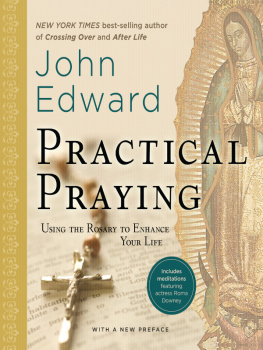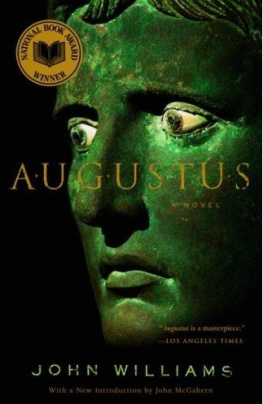THE ROWS OF GREAT YARMOUTH.
The two most remarkable and noteworthy features of the ancient Borough of Great Yarmouth, that remain unchanged to the present day, are the Parish Church, and the unique series of long, narrow passages, known by the general name of Rows. The wonderful proportions and interesting features of the renowned Church having been duly examined, these singularly confined thoroughfares next claim the attention of the intelligent visitor. On seeing them for the first time, the query naturally arises in the mind, why were they constructed in this peculiar manner, so opposed to all prevailing ideas? Thoughtful minds have ingeniously surmised sundry motives; but the preponderating belief is probably the most correct one, viz., the builders desire to economise the limited area at their disposal within the walls of the fortifications. In early times the population of Yarmouth grew apace; numbers of enterprising persons from various places being attracted thither by the flourishing fishing operations that were carried on here. Manship, in his History of Yarmouth, states that within four hundred years from the time when from a sand in the sea, by the deflection of the tides, Yarmouth grew dry and firm land, whereby it became habitable; the population grew to a great multitude, over whom, at the beginning of the Reign of Henry I., a Provost was appointed. It may be mentioned, by the way, that it was in this reign the Parish Church of St. Nicholas was built. The population of Yarmouth, in the year 1348, numbered ten thousand. We can, therefore, without difficulty, understand how valuable space would be in those early times, and how general the desire to make the most of it.
It is interesting to notice that Manship, who wrote in the year 1619, opined a very different reason for the circumscribed limits of the Rows. When contemplating them patriotically, he prognosticated, with glowing satisfaction, the bad half-hour that awaited any rash invader, who might incontinently venture to approach them, feeling assured the brave and hardy inhabitants of those seven score passes would render a good account of themselves on any such occasion. But we must quote his own words. He says: The number of them (the Rows) at this day be 140; whereby every householder to his private dwelling hath of all necessaries very convenient conveyance, and the same in time of hostility, for the defence and safeguard of the town, is very meet and necessary, for one man against twenty, with shot and powder, is able to make resistance. Continuing the subject, he says: These buildings, although dissevered and disjoined each from the other by Rowes or Lanes, the same being in number, as I have before declared, one hundred and forty, yet is there not any more division in comeliness, to be by the eye discovered, amongst them, than unpleasantness to the ear in music, consisting of many discords which do make a perfect concord. The streets being contrived and built in such warlike manner, flankerwise, with such convenient distance from the walls (fortifications) aforesaid, that the enemy having gained the walls, and entered the town (both which God forbid), may with few men, be enforced to retire, and the town recovered without any great danger sustained.
It seems the most reasonable supposition that the Rows were constructed as we see them, in order that as large a population as possible might be concentrated within the narrowest limits, to make the work of fortifying the town as easy a matter as possible, and give, at the same time, greater security to the whole.
The following imaginative idea may be taken for what it is worth, namely, that the ground plan of the Streets and Rows were suggested by the fishermens nets, when spread out in long lines upon the Denes for drying, a narrow pathway being left between the nets of each fisherman, the pathways representing the Rows.
It has been sagely remarked by a reflective writer that the Rows seem to have been so constructed, that in the event of an unusually high tide, the water might flow through them. And in like manner observes another, if the water swept over on one side, it would make its escape at the other as if through a grating. Had such a contingency been in contemplation, surely a greater breadth would have been given to allow the water a freer flow.
These Rows, as might have been anticipated, have been objects of much interest to Visitors generally, but especially to those of antiquarian tendencies. The minds of some have been so impressed with their old-world appearance, that on returning to their distant homes, they have relieved themselves by relating wonderful descriptions of them to the unfortunate individuals who had not yet seen them. Some have excitedly rushed into print, and gladly made known to whole neighbourhoods, through their local press, the striking phenomena they had witnessed here. One described the Rows to wondering readers as fearsome apertures in the street, and then soothingly added, but there is nothing to fear. Another, we imagine, well-versed in country life, said they were like rabbit burrows. A third descriptive writer asserted that many of the ancient thoroughfares might be appropriately termed cracks in the wall, they are so narrow. Another less excitable individual wrote, many of them are so narrow that you can easily touch both sides at once, by stretching out your hands while walking through, and it surprises the stranger not a little to be told that these were the only communications between the principal thoroughfares of the town. The critical pen of another scribe declares them to be very long alleysneedless alleys I should say, if the architects had only known what they were about in the days when these alleys were made. Ah! yes! and then, before leaving the consideration of them, he thus describes their capabilities. They are so narrow that neighbours can shake hands across their little street. Another, condescendingly, describes the way in which it may be done. The inhabitants might lean out of their windows and shake hands. Still further capabilities were seen by another imaginative writer. You can put your hand out of your bedroom window and put out the candle in your neighbours; and, I suppose, if necessary, borrow the candlestick; but this he omitted to state. One, whose presence had, doubtless graced continental cities, as well as honoured the Rows of Great Yarmouth, saw in them other possibilities, and stated for intricacies they can compete with the most confined of those of any Continental City you can mention, where the inhabitants can converse and shake hands from upper stories, visit each other in night-caps, quarrel in the upper world, or carry on a general confab, peacefully or otherwise. Somewhat more definitely wrote another: They are passages between parallel streets, some with shops on either side like Union Passage in Birmingham, but most of them only a few feet wide, with dwelling houses on each side, where a jump from one window to another would be an easy task for a gymnast. Who can but admire the following graphic description? What a quaint old town. The fine Market Place is like an open plain; the scores of narrow Rows running out of it may be likened to burrows leading in all manner of directions. However does each denizen find his, or her dwelling? Do they never get mixed, and give it up for a bad job? Some of these Rows are too narrow to permit of a man falling down if he got crosswise. Having investigated them with the eye of an antiquary, another gentleman described the Rows as the long series of narrow passages, running from one principal street to another, numbering 145 in all, with houses on each side. Although none of them are sufficiently wide to allow of other than pedestrian traffic, many quaint old-fashioned houses, dating several centuries back, bearing both external and internal evidence of great expense and labour being devoted to their erection and decoration. In fact, old Yarmouth is full of interest to the antiquary and to the curiosity seeker. Of course, the visitor with an eye to sanitation, has not allowed the Rows to be unexplored. They have borne the scrutiny, and we may breathe freely now the verdict has been given. A remarkable appearance is presented to the visitor by the number of long narrow lanes called Rows that run east and west of the town. It leaves little room for doubt of the healthiness of the place when these Rows are examined, for their cleanliness and orderly appearance must surely render them conducive to the highest possible standard of health; and if these observations can be applied with as much appropriateness to the internal sanitary arrangements of the dwellingsas I have reason to believe it maythe Corporation may congratulate themselves on the success of their efforts in this respect.










